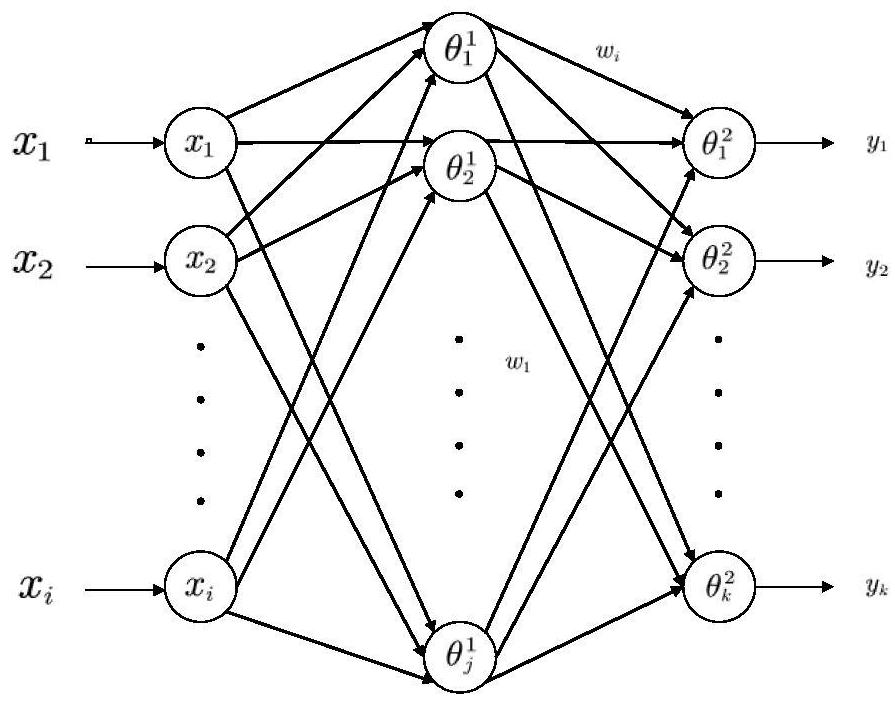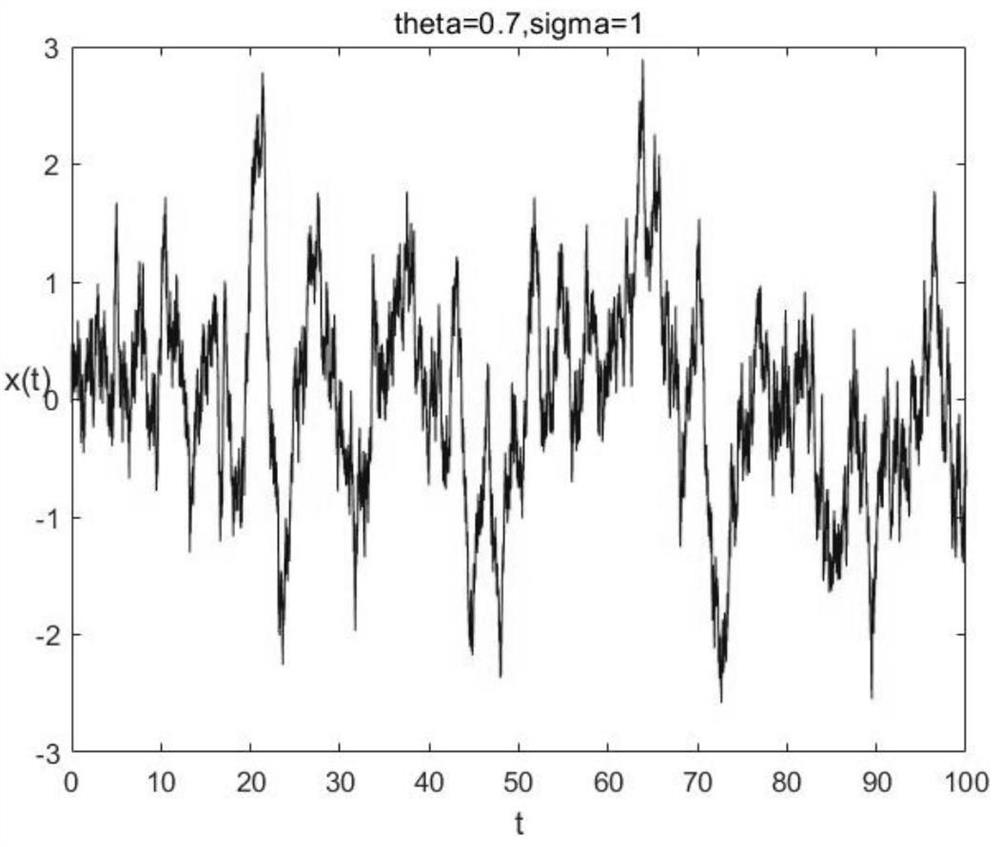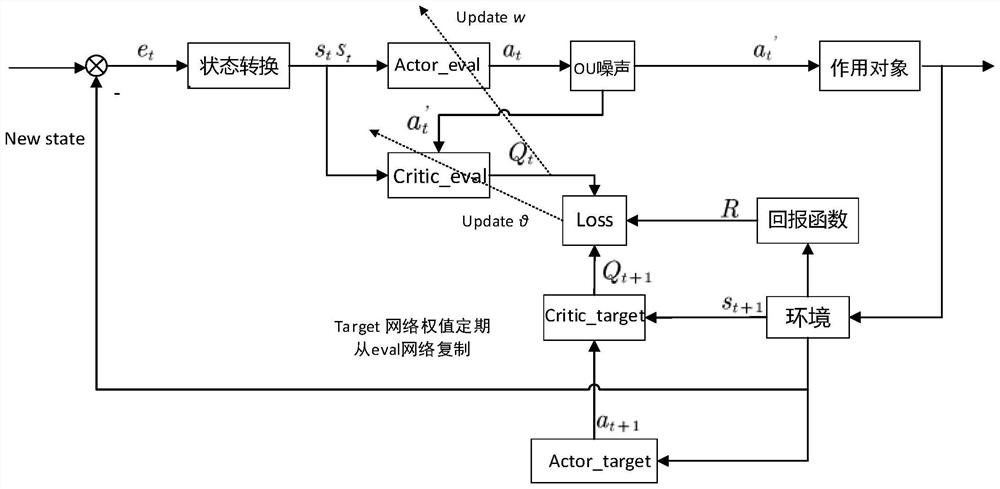Multi-AUV formation distributed control method based on reinforcement learning algorithm and unknown disturbance observer
A technology of interference observer and distributed control, applied in the field of multi-AUV formation distributed control, can solve problems such as poor control accuracy, achieve the effects of precise control, improve convergence speed, and improve exploration ability
- Summary
- Abstract
- Description
- Claims
- Application Information
AI Technical Summary
Problems solved by technology
Method used
Image
Examples
specific Embodiment approach 1
[0022] A multi-AUV formation distributed control method based on a reinforcement learning algorithm and an unknown disturbance observer described in this embodiment includes the following steps:
[0023] S1. Establish AUV kinematics model and dynamics model:
[0024] Considering the influence of ocean current disturbance, let the disturbance be d, the dynamic model of AUV:
[0025]
[0026] For the control of the agent on the horizontal plane, the AUV dynamics model is simplified to the horizontal plane motion model. The simplification process is based on several characteristics of a certain type of AUV developed by the Key Laboratory of Underwater Robots of Harbin Engineering University:
[0027] (1) The center of gravity of this type of AUV coincides with the origin of the satellite coordinate system, the center of gravity is located below the buoyancy center and on the same vertical line as the buoyancy center, and it is assumed that gravity and buoyancy are balanced; ...
specific Embodiment approach 2
[0096] A multi-AUV formation distributed control method based on a reinforcement learning algorithm and an unknown disturbance observer described in this embodiment, the establishment process of the AUV horizontal plane kinematics model and dynamics model includes the following steps: AUV kinematics equation: The AUV kinematics equation essentially reflects the transformation relationship between the earth coordinate system and the satellite coordinate system. When an external force acts on the AUV, it will generate linear acceleration and angular acceleration, so that the linear velocity and the angular acceleration of the AUV When the angular velocity changes, in order to understand the final pose change of the AUV in the earth coordinate system caused by the change of linear velocity and angular velocity, the coordinate transformation matrix will be involved.
[0097] When converting from the earth coordinate system (that is, the inertial coordinate system) to the satellite ...
specific Embodiment approach 3
[0127] A multi-AUV formation distributed control method based on a reinforcement learning algorithm and an unknown disturbance observer described in this embodiment, the process of designing an adaptive distributed controller includes the following steps:
[0128] Before designing the structure of the parameter adaptive distributed cooperative control system based on the improved Actor-Critic algorithm, it is necessary to deduce the longitudinal and heading distributed controllers of AUV based on the backstepping method. The backstepping method belongs to the nonlinear control method. Its basic idea is to design the intermediate virtual control quantity according to the Lyapunov theory, and design the feedback control law under the premise of ensuring stability, so as to ensure that the tracking error gradually approaches zero. The mathematical derivation of the longitudinal and heading distributed controllers in the present invention is based on a simplified AUV horizontal mat...
PUM
 Login to View More
Login to View More Abstract
Description
Claims
Application Information
 Login to View More
Login to View More - R&D
- Intellectual Property
- Life Sciences
- Materials
- Tech Scout
- Unparalleled Data Quality
- Higher Quality Content
- 60% Fewer Hallucinations
Browse by: Latest US Patents, China's latest patents, Technical Efficacy Thesaurus, Application Domain, Technology Topic, Popular Technical Reports.
© 2025 PatSnap. All rights reserved.Legal|Privacy policy|Modern Slavery Act Transparency Statement|Sitemap|About US| Contact US: help@patsnap.com



